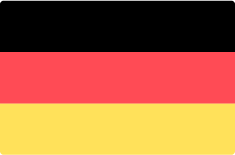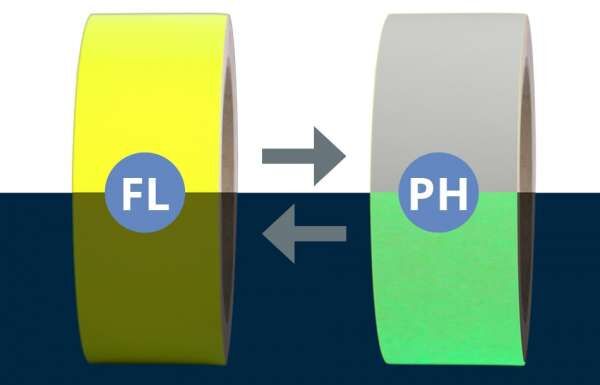Films can absorb, store and reflect light in different ways. A distinction is made between fluorescent, phosphorescent and retroreflective properties. Each of these types of film has advantages in the corresponding areas of application and contributes to a safe result.
Quick-Navigation:
Luminescence - generic term for fluorescent and phosphorescent properties
Luminescence is a physical phenomenon in which the energy supplied from outside is emitted as light or invisible radiation without generating heat ("cold light"). Depending on the type of energy source, there are various subtypes such as electroluminescence (light caused by the application of an electric field or an electric voltage) or chemiluminescence (light caused by a chemical reaction). The photoluminescence subtype is relevant for the topic of films, which in turn is divided into fluorescence and phosphorescence.
Fluorescence - "Day glow"
In the case of fluorescence, the luminous effect ends immediately after the end of the irradiation (where there is no light, there is no glow). The pigment contained in the film reacts to UV light and therefore lights up. Fluorescence can therefore be described as "day glow". Fluorescent films are used, for example, on emergency vehicles of the police, fire brigade and rescue services to ensure conspicuous marking even during the day. Another example of fluorescence is fluorescent/neon colours that light up under UV light.
Phosphorescence - "Afterglow"
Phosphorescence describes a prolonged afterglow of the substance, which can last from a few seconds to several hours after the end of exposure to light. In contrast to fluorescence, phosphorescence can also show its luminosity in the dark. The materials always glow a pale yellow-green colour. However, it should be noted that the luminescent effect can only occur after a sudden cessation of exposure to light. It would therefore not make sense, for example, to use phosphorescent film for outdoor signs or lettering - the gradual darkening and twilight mean that the film can only store a small amount of light until it is actually dark. The principle is used, for example, for information signs or the labelling of escape routes.

Retroreflection - " Back radiation "
Retroreflection means that the light rays that hit a boundary surface from a light source are sent back to the irradiating light source. Retroreflection belongs to the category of reflection and not to luminescence - you can find a detailed explanation in our glossary article Retroreflection.
Retroreflective fluorescent film
The retroreflective and fluorescent characteristics can also be combined in one product. The luminous effect is provided by the retroreflection both at night and by the fluorescent colour during the day. Retroreflective fluorescent films are suitable for barrier equipment, scaffolding, gates and barriers, among other things.








